#american mythology
Photo



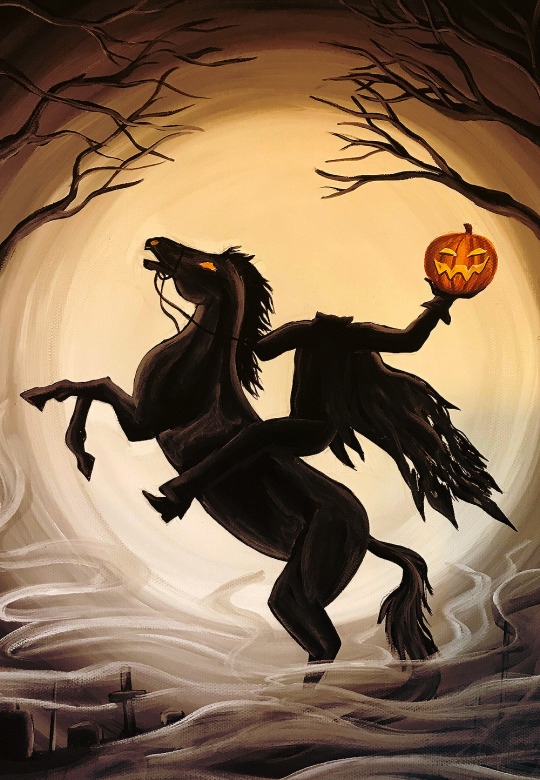
The Evermore Grimoire: 🎃 Halloween Monsters 🎃
The Headless Horseman is a mythical figure who has appeared in folklore around the world since the Middle Ages and is traditionally depicted as a rider upon horseback who is missing his head. Depending on the legend, the Horseman is either carrying or missing his head altogether, and is searching for it. In American folklore he is a fictional character from the 1820 short story ‘The Legend of Sleepy Hollow’ by American author Washington Irving. The legend of the Headless Horseman begins in Sleepy Hollow, New York, during the American Revolutionary War. Traditional folklore holds that the Horseman was a Hessian trooper who was killed during the Battle of White Plains in 28th October 1776. He was decapitated by an American cannonball, and the shattered remains of his head were left on the battlefield while his comrades hastily carried his body away. Eventually, they buried him in the cemetery of the ‘Old Dutch Church of Sleepy Hollow,’ from which he rises as a malevolent ghost, furiously seeking his lost head and wielding a Jack-o'-Lantern as a temporary replacement and/or weapon. Modern versions of the story refer his rides to Halloween, around which time the battle took place.
artwork by Kilaarts
#MythEdit#MythologyEdit#American Mythology#FantasyEdit#Headless Horseman#The Legend of Sleepy Hollow#Halloween Monsters#Halloween#My Edit
610 notes
·
View notes
Text

Day 30 everyone’s favourite cryptid MOTHMAN! For the prompt warning!
#art#digital art#artists on tumblr#cute art#pigeon wishes#pigeon wishes art#art challenge#elktober#monster#cryptid#mothman#moth#original art#art process#artwork#my art#mythology#american mythology#monster partner#monster boyfriend#he’s a moth he’s a man#day 30
54 notes
·
View notes
Text


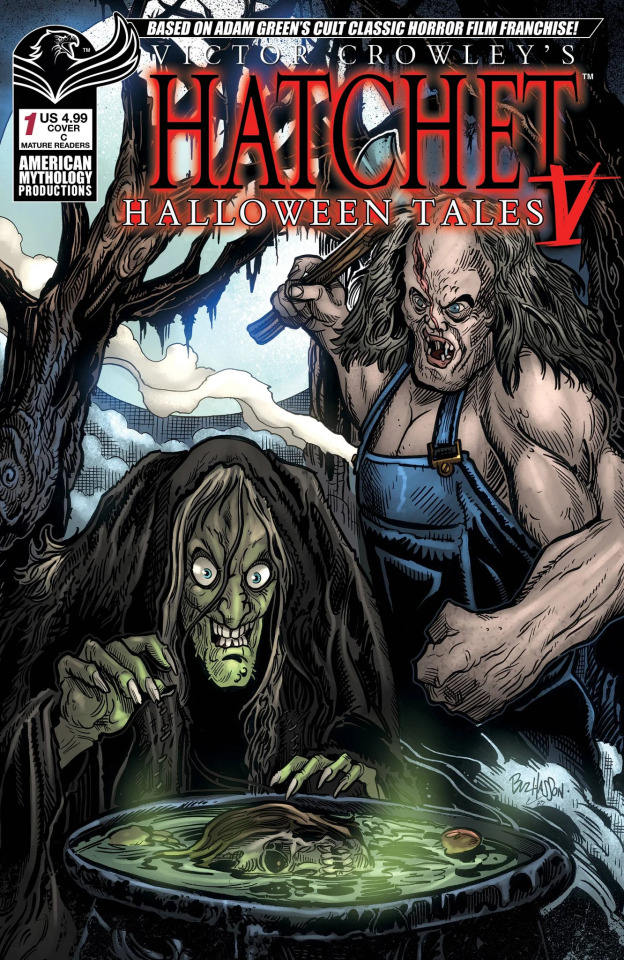
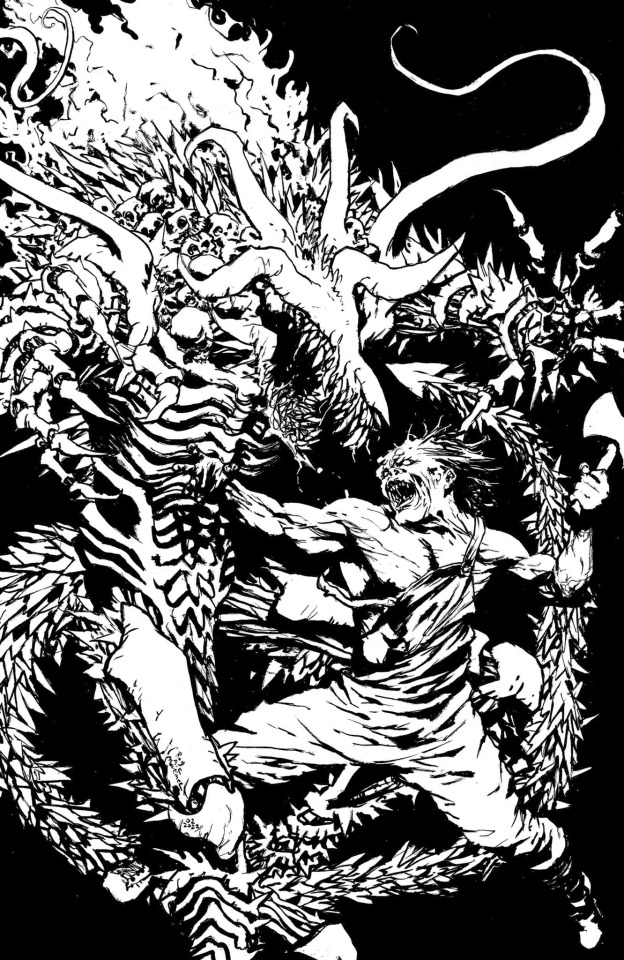
Victor Crowley’s Hatchet Halloween Tales V will be released on October 18 via American Mythology. The 32-page one-shot comic book features three more stories set in the Hatchet universe during Halloween.
The stories are written by S.A. Check, James Kuhoric, Konstantine Paradias, and Cullen Bunn and illustrated by Ev Cantada and Puis Calzada.
Four cover are available: the main artwork by Roy Allan Martinez, variants by Puis Calzada and Buz Hasson, and a black-and-white virgin edition of Martinez's art (limited to 350).
In addition to your standard comic retailers, you can pre-order copies signed by Hatchet creator Adam Green from ArieScope Pictures. They’re $20 each except the virgin edition which is $25, or $60 for all four versions.
The midnight hour is close at hand! Everyone's favorite slasher is back with brand-new terrifying bloody tales of Halloween to enjoy this holiday season. This year's issue is the biggest yet! Three new frightening tales narrated by the dismembered victims of Victor Crowley. Join us for an issue packed with comics, extras, and Halloween horror from start to finish! This is more gore for your buck than any other comic book! Spend Halloween in Honey Island Swamp this year and watch out for Victor Crowley!
#hatchet#victor crowley#adam green#kane hodder#slasher#american mythology#ariescope#horror comics#book#gift#roy allan martinez#puis calzada#buz hasson#halloween#Ev Cantada
23 notes
·
View notes
Text
i love reading about mythology in different cultures because it will either be the most metal stuff ever or something incredibly stupid
with norse mythology its like. This is Jörmungandr, also known as the Midguard Serpant. This colossal beast dwells in the World Sea, circling the globe.
and then you go over to US folklore and it’s just. this is the goofus bird. it flies backwards. oh that? that’s the squonk, and it cries if anyone sees it.
#mythology#norse mythology#american mythology#it’s so stupid sometimes#and I love it for that#lazy rambles
19 notes
·
View notes
Text
Died With a Hammer in His Hand: Unpacking the Myth of John Henry
“John Henry said to his captain:
‘You are nothing but a common man,
Before that steam drill shall beat me down,
I’ll die with my hammer in my hand.’”
— “John Henry, the Steel Driving Man,” recounted by W. T. Blankenship
John Henry is one of America’s most well-known mythic heroes, immortalized in song, statue, postage stamp, and multiple movies (including a 2000 Disney animated short film which I vividly remember watching in elementary school). But if you’re unfamiliar with the legend, here’s a brief summary.
John Henry was a freed slave who found himself working for a railroad company in the years following the Civil War as a steel driver. His job was to drive a steel spike into rock so that dynamite could be placed in the resulting hole, thus opening up a tunnel through the Appalachians.
John Henry was the best on his crew, and he took pride in his work—so when a white salesman brought in a steam-powered drill, claiming that it could drill better than any man, he decided to challenge that claim. Henry entered into a contest with the machine to see who could carve out the deepest hole in the mountain in a single day.
His victory cost him his life.
Henry’s wife—sometimes named Polly Ann, sometimes named Lucy, sometimes not named at all—went to visit him on his deathbed that evening. In many versions of the ballad, Henry’s last words are a request for a glass of water. In other versions, he asks his wife to be true to him when he’s dead, or to do her best to raise their son. Many accounts say that he’s buried by a railroad, where “Every locomotive come roarin’ by, / Says there lays that steel drivin’ man” (lyrics from Onah L. Spencer).

Bronze statue of John Henry near Talcott, West Virginia, sculpted by Charles Cooper.
The general consensus among historians now seems to be that the ballad of John Henry is one such legend that has its roots in historical fact, although the particulars are long obscured by the centuries that have since passed. Henry was born into slavery in the 1840s or 50s, either in North Carolina or Virginia (some accounts of the ballad lend credence to the latter claim). As for how John Henry found himself working for the Chesapeake & Ohio Railway company, University of Georgia history professor Scott Reynolds Nelson posits in his book Steel Drivin’ Man that the man was sentenced to ten years in a Virginia prison for theft at only nineteen years of age, and that he was among many prisoners leased out by the state for labor.
Did you know that the 13th Amendment makes an exception for slavery which is used “as a punishment for crime whereof the party shall have been duly convicted”? (This practice continues to this day, and has become an industry worth tens of billions of dollars. Louisiana State Penitentiary, also known as Angola or simply “The Farm,” is a good place to begin if you’re wanting to look into chain gangs further.) John Henry the legend was a free worker who took on the backbreaking, often dangerous work of railroad labor under his own power and could demand any wage for his work, but John Henry the man may have lived and died in neoslavery.
Speaking of Henry’s death, most retellings of the myth say that he died of sheer exhaustion. Some add in the detail that it was his heart that gave out because he worked himself too hard. However, alternate theories have been proposed for how the man died. Some historians say it was a stroke that killed him, while others posit silicosis.
It’s this latter hypothesis which I find most intriguing. For those who aren’t familiar with it, the American Lung Association describes silicosis as “a lung disease caused by breathing in tiny bits of silica, a common mineral found in sand, quartz and many other types of rock.” It’s been an occupational hazard for construction workers since, well, the time of John Henry. What I find interesting are the implications for the narrative if the real Henry died of silicosis. In the folk ballad, Henry causes his own death by working himself too hard. On the other hand, the ones at fault if the man died of silicosis would be his employers—the ones responsible for the dangerous conditions he worked in.
So why would John Henry’s cause of death change during the transition from fact to legend?
The answer, as with many other fictionalized accounts of historical events, is that it simply makes for a more effective story. But not just that—a more effective message. So what might the ballad be trying to tell those who listen to it?
First, let’s think about who this song was sung by and for. The ballad of John Henry is a work song, its rhythm meant to help railroad workers stay and strike in sync, in the same way a drumbeat helps soldiers march in step. It’s been sung by railroad workers, miners, construction workers, chain gangs, and country musicians. At its core, then, the ballad is a song of and for the American working class—specifically those people doing the same sort of backbreaking physical labor as John Henry himself. Many of these laborers would have been Black, and likely former slaves—especially when it came to Southern chain gangs. (See my above note about how American slavery was only mostly abolished, and then think about why the U.S. has one of the highest incarceration rates in the world. . . but I digress.)
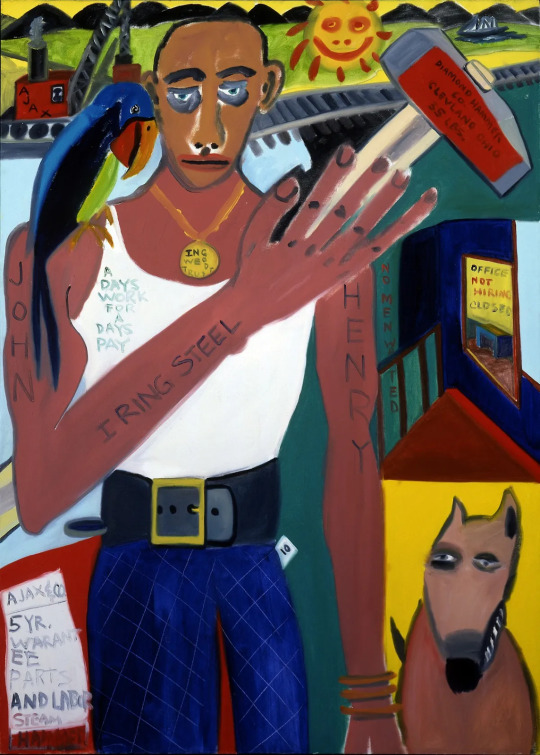
An oil painting of John Henry by Frederick Brown.
We’ve established that John Henry is a hero for working-class Americans during the time of the Second Industrial Revolution. But what sort of hero is he? Is he like Achilles, a paragon of his country’s values and an example for the audience to aspire to? Or is he an Icarus, a cautionary tale sung so the audience won’t repeat his mistakes?
The answer depends on who’s telling the story.
Onah L. Spencer is the source for one version which emerged from a Black community in Cincinnati, Ohio. When he recounted the lyrics to Guy B. Johnson for the latter’s 1929 book John Henry: Tracking Down a Negro Legend, he also stated that the song was used to motivate workers: “. . . if there was a slacker in a gang of workers it would stimulate him with its heroic masculine appeal.”
In cases such as Spencer’s crew, then, John Henry’s death is presented as glorious, and Henry is seen as admirable for working so hard that it kills him. Here, he’s a good example. Taken to the extreme, the Achillean Henry encourages fellow workers to follow in his footsteps—to keep pushing themselves harder and harder until they finally keel over.
This message doesn’t benefit the workers passing it along; it benefits the employers profiting from their labor. This, I think, is where the story blurs the line between myth and propaganda. And while the ballad of John Henry certainly isn’t singlehandedly responsible for the American tendency to overwork ourselves, it does reflect our attitudes about work in a way that’s worth unpacking. To me, this reeks of the Puritan work ethic. The belief was that you had to be working as often as you could; if you didn’t, the devil would be able to influence you. The Puritans were one of America’s foundational cultural influences—of course those values would have influenced the ballad of John Henry.
Henry is a hero because he worked himself to death. If we see him as a good example, what does this say about the effects that capitalism has had on American attitudes? About the internalized belief that our worth as humans only comes from what we can contribute to the economy? Why do we see death from exhaustion as a fitting end for a former slave?
Then again, maybe we’re not supposed to.

A lithograph of John Henry, from the series American Folk Heroes, by William Gropper.
Remember how I noted earlier that many of the laborers who first sang Henry’s ballad would themselves have been former slaves? It’s important because there’s a long history of American slaves using work songs as a tool of resistance against their oppressors, and these Black laborers—these “freed” slaves—would have carried that tradition with them into the Second Industrial Revolution.
The ballad of John Henry, then, might have been sung with the intent of helping other workers survive the brutal conditions on the railroads. Here, Henry becomes an Icarus—a warning of what happens if you push yourself too hard. One version of the ballad recorded by Edward Douglas of the Ohio State Penitentiary contains lyrics which suggest that not every Henry was meant to be emulated.
“John Henry started on the right-hand side,
And the steam drill started on the left.
He said, ‘Before I’d let that steam drill beat me down,
I’d hammer my fool self to death,
Oh, I’d hammer my fool self to death.’”
Don’t do what John Henry did, this version warns the audience. Be wiser than he was. Don’t push yourself quite so hard. Think of the people you’d be leaving behind if you’re not careful.
Perhaps even the creation of this mythos was an act of defiance in and of itself. At this point, I think it bears mentioning that I myself am not Black and can only hypothesize based on what I’ve heard from people who are, but I see something radical in the act of raising up one of your own as your hero rather than venerating the people you’ve been told are superior to you.
Remember, John Henry’s contest was versus a white man’s machine. It costs him everything, but he triumphs over the expectations of that steam drill salesman and proves his worth as a laborer and a person. John Cephas, a blues musician from Virginia who was interviewed by NPR for a report on John Henry back in 2002, had this to say of the myth:
“It was a story that was close to being true. It’s like the underdog overcoming this powerful force. I mean even into today when you hear it (it) makes you take pride. I know especially for black people, and for people from other ethnic groups, that a lot of people are for the underdog.”
Americans love underdog stories. Our own national origin myth is one! John Henry’s assertation of power and skill, the ballad’s declaration that Black people have the right to be proud of themselves too. . . no wonder this myth has resonated with so many people. No wonder it’s survived for a century and a half.
In this light, then, John Henry once again becomes a hero for us, the audience, to emulate. In the fight against oppression, endurance like Henry’s becomes key. Justice is almost never won quickly. The odds stacked against us may seem impossible, but it’s worth trying anyways, even if we have to fight to our dying breaths.
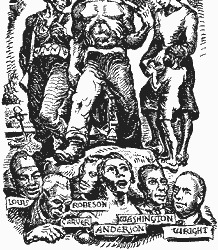
Artwork of John Henry as a defense worker by James Daugherty.
John Henry has meant and been many things to a lot of people in the past two centuries. A representative of capitalist exploitation, a cautionary tale for workers, an inspiration to oppressed people in America, even a communist icon—but I’d like to take a moment to talk about what his story means to me. It’s not something I’ve seen discussed in my research, and I think it’s worth exploring.
John Henry reflects fears of workers during the Second Industrial Revolution who saw how technology was evolving—how machines were being created that could do their jobs not just faster, but cheaper, because you don’t have to pay a machine like you would a person. They feared that they would be replaced, and that they would be left destitute while their former bosses grew richer and richer. And despite the centuries between us, this is a fear that I can understand.
Often, I feel it myself.
As an artist existing in online spaces during this new influx of AI-generated “art” and writing, I have witnessed many fears that we will be replaced by AI. Yes, there is a certain human quality to art that a generative learning model cannot replicate, but who’s to say that the much-vaunted free market will care? We can hope that art as a profession will survive, but we just don’t know.
In John Henry’s struggle, I see my own. In the steam drill salesman, I see tech bros on the platform formerly known as Twitter showing off their latest batch of beautiful, hollow, AI-generated “art.” I see John Henry’s passion, his pride, his triumph.
And I see hope.
By his life and death, the mythic John Henry reassures me that human beings aren’t so easy to replace after all. He tells me that machines can be defeated. That one day, my vindication as an artist and writer will come, and the world will see our worth.
The ballad of John Henry has endured like a mountain for a hundred and fifty years, and I hope it will survive for hundreds more—that John Henry’s hammer will continue to ring true throughout the ages. But in the midst of American mythos, it’s important not to lose sight of the historical facts behind it. Legends are interesting and inspirational and wonderful, but the real stories have something to tell us, too.
Don’t forget to listen.
Works Cited
American Lung Association - Silicosis
Ballad of America - This Old Hammer: About the Song
Constitution of the United States - Thirteenth Amendment
Encyclopedia Britannica - John Henry
Flypaper by Soundfly - The Lasting Legacy of the Slave Trade on American Music
Folk Renaissance - John Henry: Hero of American Folklore
How Stuff Works - Was There a Real John Henry?
ibiblio.org - John Henry: The Project
National Park Service - The Superpower of Singing: Music and the Struggle Against Slavery
NPR - Present at the Creation: John Henry
NPR - Talk of the Nation: The Untold History of Post-Civil War ‘Neoslavery’
PBS - Mercy Street Revealed Blog - Singing in Slavery: Songs of Survival, Songs of Freedom
Prof. Scott Reynolds Nelson - Steel Drivin’ Man: John Henry, the Untold Story of an American Legend
World Population Review - Incarceration Rates by Country 2024
#john henry#american mythology#analysis#essay#black history month#ari speaks#hi I wrote this for my english class and I felt compelled to share it here
9 notes
·
View notes
Text

Can anyone help me critique this?
This is my illustration of the creation of Devils Tower (original name being Mato Tipila from the research I’ve done)
Is this properly representing this legend/story?
I am working on a publication for a college class that is a book of North American tall tales and traditional legends. And I want this booklet to have stories from traditional Native American tales as well!
If anyone more well versed in Native American stories than I am has any critiques please leave them in the tags or the comments! Anything is welcome because I want to represent this story as well as I can! 💚
#native american#native american mythology#american mythology#devils tower#my art#art critique#art help#illustration#tall tales
10 notes
·
View notes
Photo
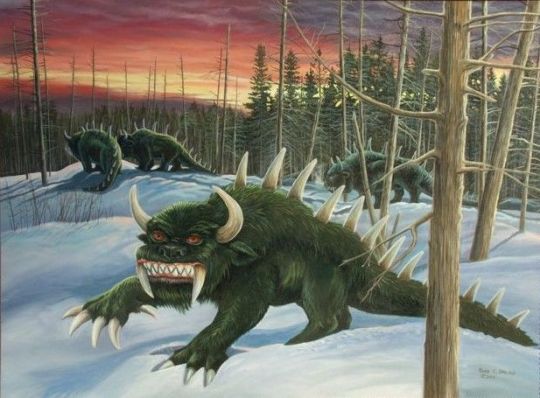

The Hodag [American tall tales]
When the USA was a young country, the American settlers would sometimes tell each other stories of strange and fantastic creatures that supposedly roamed the dense forests. These ‘tall tales’ as they came to be known were often intended as humoristic stories, not really meant to be taken seriously, and sometimes they were attempts to scare fellow workers by describing encounters with scary monsters. Still others were rooted in truth, but became exaggerated to the point of fiction. Regardless, these fearsome beasts remained a source of entertainment for generations and some of them eventually became cryptids and urban legends.
One of the most frequently reoccurring monsters is the Hodag. This four-limbed creature supposedly dwelt in Maine, but was also seen in Minnesota and Wisconsin. Described as ‘distressingly ugly’, the fearsome Hodag boasts a head with large horns and staring bulging eyes. Its feet end in dangerous claws and its back is adorned with a row of spines. In addition, the Hodag has a long tail that ends in a hook. The creature is roughly the size of a rhinoceros and can be mistaken for one at a distance. Its body is hairless and is sometimes said to be adorned with a strange pattern of stripes. In one account, the creature did not have horns but instead had a spade-like bone plate protruding from its nose.
This spade-like horn is not actually used for combat, but for digging up the roots of trees. The Hodag’s diet mainly consists of porcupines, which it catches by digging up trees and making them fall over, on top of an unsuspecting porcupine. After this first hit, the creature grabs the tree and repeatedly hits its prey to weaken it. If successful, the Hodag then swallows the porcupine whole.
You should never laugh at a Hodag, regardless of the reason. This will make the creature furious and aggressive. Luckily, there is a very simple way to defend yourself against these monsters: they are deadly afraid of lemons. Even a single lemon is enough to ward off an entire herd.
If you happen to find a Hodag in the wild, you can sometimes see it crying to itself. The tears it weeps sometimes solidify as they fall to the ground and resemble chunks of amber.
It is said that people used to fashion umbrella handles out of Hodag teeth.
Sources:
Cox, W. T., 1910, Fearsome Creatures of the Lumberwoods, Press of Judd & Detweiler, Washington D. C., USA. Which you can read here.
Tryon, H. H., 1939, Fearsome Critters, Idlewald Press, New York, USA. Which you can read here.
(image source 1: painting by Rodd Umlauf)
(image source 2: Margaret Ramsay Tryon, illustration for “Fearsome Critters” by Henry H. Tryon)
105 notes
·
View notes
Text



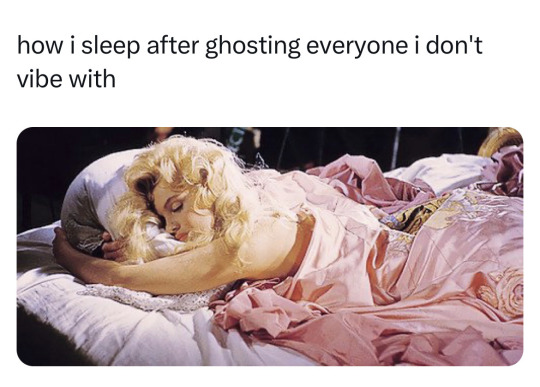






One of these is terrible and dark, just a TW
#dank memes#memes#just witchy things#goth#livingmybestlife#we are the weirdos mister#craY#mothman#cryptids#supernatural creatures#american mythology#angels#sleep#funny#cutting out toxic people#self care#self love#wellness#star trek#scifi#fandom#dark humor
2 notes
·
View notes
Text
We really need to find another name for the "wendigo" creature design because I love the design deer skull humanoid cryptid without it being attached to the cultural appropriation of the native mythical creatures name
#i need a natives pov#native american#american mythology#cryptid#wendigo#dogskull#deerskull#monster design#creature design#myth#design#cultural appropriation#tumblr#cryptozoology#horror#mythical creatures#creature#deerman#skull monster#bones#indigenous#first nations#folklore#needs a different name#creature designh#horror monsters
6 notes
·
View notes
Text
179: Elvis Presley // The Sun Collection

The Sun Collection
Elvis Presley
1975, RCA Victor
Is there anything left worth writing about Elvis? Well, people still find smart things to say about Jesus. Getting through all the muck around him took some doing for me, and it was probably the mythic intensity of Nick Tosches and Greil Marcus’s writing on his career (and particularly the Sun Sessions) that gave me a framework for understanding what made him so electric, something more than the pancake-foundationed Engelbert Humperdinck- or Wayne Newton-type Vegas tchotchke he seemed to be. I don’t have a ton to add to the conversation around Presley, but I was curious about how people think about him these days, whether they still have any strong opinions at all. I asked a bunch of friends (and my grandma) to give me their impressions of the King, and their thoughts follow.
youtube
18 Takes on the King
“I guess he's like a sexy (not as in attractive, but more like assuming the affectation of sex) Gumby who was the perfect conduit for music producers looking to extract culture from Black communities, can it, and sell it to white America like tinned fish. It's like if Hank Hill had a verbal aphasia and could only stutter vowel sounds, but it somehow still slaps despite the odds.”
“The quintessential model for a pop star who is overtly sexualized but also somehow innocent or naïve. This presentation can range from cool to creepy. Elvis didn’t do it first, but he did it the best to that point and his version came off on the cooler end of that spectrum.”
“Elvis isn’t my thing, but without him I don’t know what ‘90s independent cinema would even be.”

“I have conflicted feelings about Elvis—while I think there's something truly timeless and unique about the timbre of his voice and the way he sings (my family plays his Christmas record on Christmas Day without fail every year), I also recognize that he is overrated in that his material is neither original nor is it particularly revolutionary in any way, and if anything is just a glossed, whitewashed version of music that already existed previously that white audiences couldn’t handle. But ultimately, I do legitimately like listening to his music.”
“I’m not a major Elvis person, but early rock dude who combined gospel/blues with the developing genre of rock. Don’t think he ever claimed to be THE GUY who created the genre and from the little I know, he acknowledged the importance of Black artists in inspiring what he did. Particularly known for his cover of ‘Hound Dog.’ There we go.”
“Elvis Presley, the hip-shaking maestro of rock 'n' roll, could make even a hound dog blush with envy. His voice was smoother than peanut butter on a hot skillet, and his hair was so iconic, it had its own fan club. If music be the food of love, then Elvis was the chef who cooked up a whole lotta heart-throbbing tunes! (ChatGPT lol, sorry, busy day at work!)”
“A bejewelled sex wizard.”

“Elvis Presley allegedly came in his all-leather flight suit during his iconic ‘comeback’ special. He is one of a select few celebrities with a fervently believed rumour of being not-dead. People dress as him and marry other people together. Also, he invented a sandwich. — King Status”
“Mediocre singer who abused women and whose signature sandwich is overrated.”
“His career ate him up, then he ate everything else.”
“The King of Ripping Off Other Artists. My earliest memories of Elvis are my family listening to the Christmas album ad nauseum, but they’re good memories nonetheless. Regardless of how you feel about Elvis, you must admit ‘Jailhouse Rock’ fucking RIPS.”
“White as winter snow
pills jam and peanut butter
A king on his throne”
“A lot of people dismiss Elvis because of an opinion they've been told to have and have never really critically assessed, and I imagine a lot of people you ask about this will give you the standard take; I'm not going to fault them that, I think a lot of us have opinions like that, it's not really efficient to assess the validity of every single one of our received assumptions.
There's an absolutely dogshit short story by Alice Walker about an Elvis stand-in character and a Mama Lou Thornton stand-in character, which seems to imply that Thornton wrote ‘Hound Dog’ herself and was effectively exploited and that Elvis isn't a real artist because he can't write his own songs, which is a crock of shit because: two Jewish white guys wrote the song for Thornton; she made it a #1 record; and performance IS real artistry and Thornton, like Elvis, was a real artist and interpreted the song in a very powerful way.
The fact is, you listen to that Ed Sullivan ‘Hound Dog’ performance, and it doesn't take much to see how different it is from the original—not ‘better’ or ‘worse’ but very obviously distinct, and if you tell me otherwise you are absolutely approaching it in bad faith and there's no reason for me to even waste my time explaining that to you.
Elvis absolutely kicks the doors down in the opening bar of his version of ‘Hound Dog,’ it sounds extremely dangerous and you can immediately see why he scared parents—he was wild and in-your-face, an extremely prescient innovator who sounded totally unlike anything that came before him no matter what the haters mindlessly repeat, and he WAS a true contender for the title of King of Rock & Roll.”
“My ability to produce an opinion here was contaminated by the Baz Luhrmann movie.”
“apparently influential in bringing some sort of music (maybe it’s dance hall music) to white America but I dunno really
also he died on the toilet
or maybe aliens got him
not sure”
“A man with a good heart, in a physique of timeless beauty that comes along once in a civilization. True to his roots, and the foundation of his time, he kept his focus on God. However, his body and mind went wayward to a decadence not uncharacteristic of the chapter unto which he was born. His Spirit shone through regardless, right to the end.”
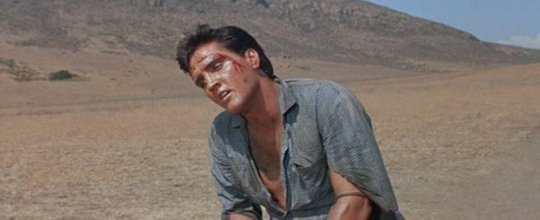
“Elvis is America in the sense that his impact was so seismic and society changed so rapidly while he was active that he basically had to become a nostalgia peddler for like, his own vibe in his own time. He went from Little Richard to Michael Bublé in like a year and a half.
He’s a perfect representation of suspended youth in that I think a lot of what makes him so iconic is that all his excesses (Graceland, the Outfits, the Karate, the Sandwiches) are basically a broke 12-year-old boy’s version of what being rich and famous looks like, which objectively rocks.
His best record is a Christmas album which I think is an appropriate celebration and condemnation of his legacy.”
“He was my youth. 😊 He was my exam study music! I loved him and his music and his movies. I still love him!”
youtube
179/365
#elvis#elvis presley#'50s music#sun sessions#crowdsourcing#'50s rock#rock n roll#american mythology#music review#vinyl record
6 notes
·
View notes
Text
My favorite genre of folklore/mythology is the creatures that are just jerks
The Ijiraq is a figure in Inuit mythology
He’s a shapeshifter and he lures kids away from their home
What does he do with the kids isn’t eat them or something else nefarious
He just takes them somewhere far away hides them and leaves them there
Like doesn’t really get much out of it
Idk maybe it’s just funny to him
3 notes
·
View notes
Photo
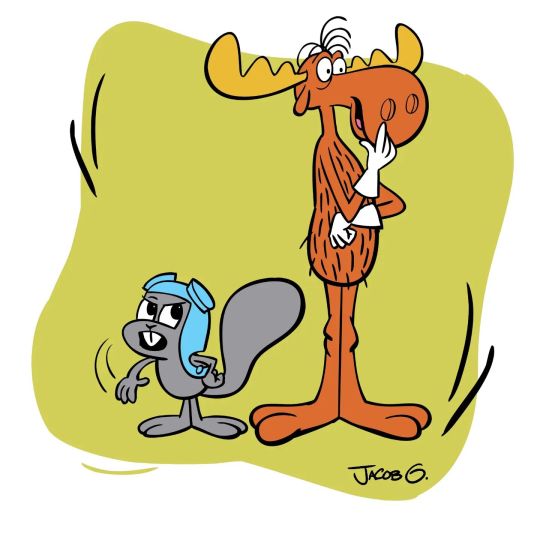

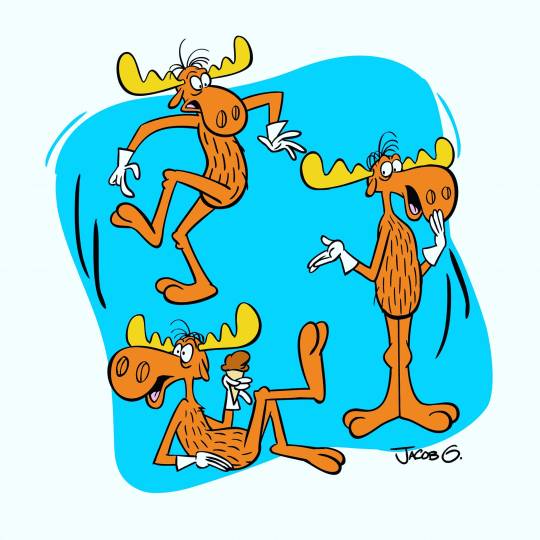

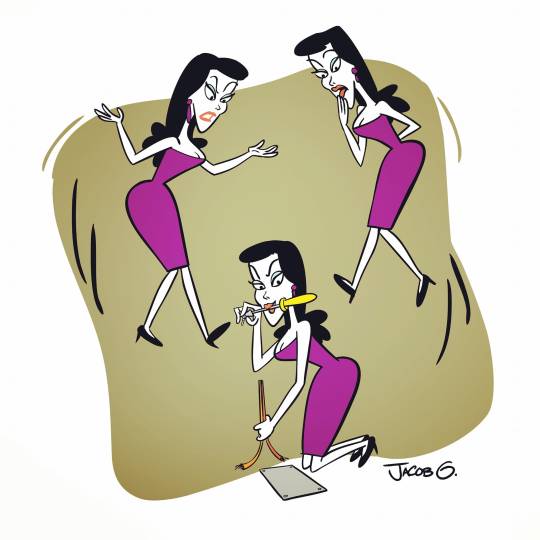

Poses of Rocky and Bullwinkle with Boris Natasha and Fearless Leader from the comic books by American Mythology.
#rocky and bullwinkle#The Adventures of Rocky and Bullwinkle#The Rocky and Bullwinkle Show#poses#comic books#American Mythology#rocky and bullwinkle and friends#jay ward#The Adventures of Rocky and Bullwinkle And Friends#jay ward productions
5 notes
·
View notes
Photo


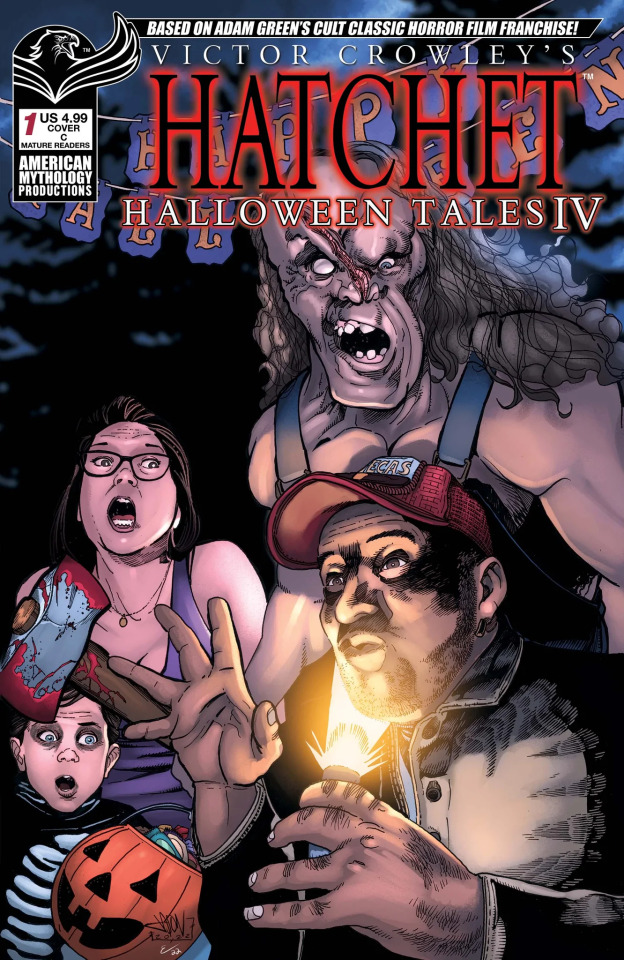
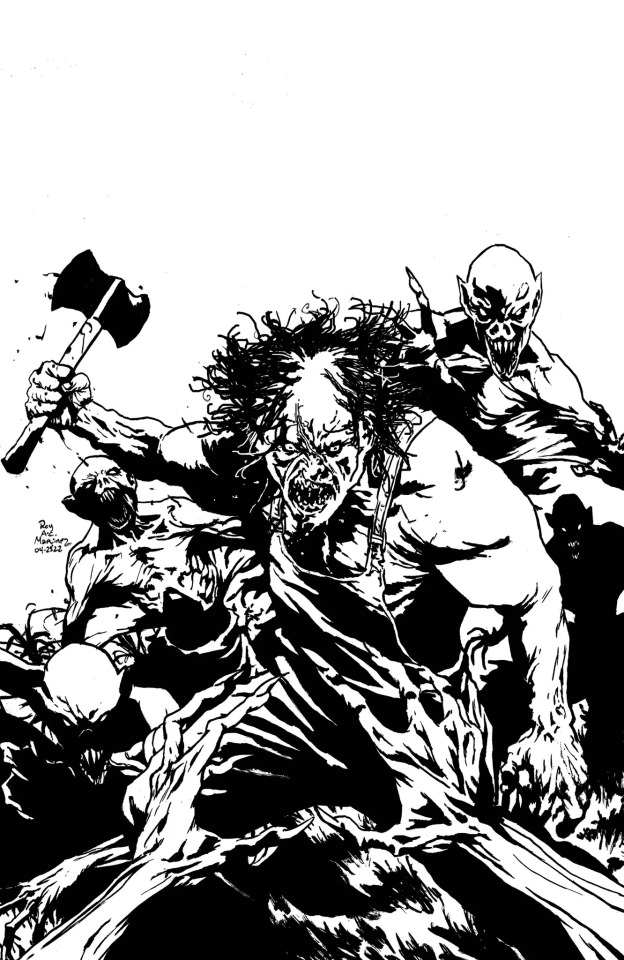
Victor Crowley’s Hatchet Halloween Tales IV will be released on October 19 via American Mythology. The 32-page one-shot comic book features three more stories set in the Hatchet universe during Halloween.
The stories are written by S.A. Check, James Kuhoric, and Konstantine Paradias and illustrated by Ev Cantada, Puis Calzada, and Horacio Domingues.
Four cover are available: the main artwork by Roy Allan Martinez, variants by Buz Hasson & Ken Haeser and Jason Craig, and a black-and-white virgin edition of Martinez’s art (limited to 350).
In addition to your standard comic retailers, you can pre-order copies signed by Hatchet creator Adam Green from ArieScope Pictures. They’re $15 each except the virgin edition which is $20, or $40 for all four versions.
The annual Victor Crowley Halloween anthology bloodbath is here! By special demand, this year's stories are introduced by the ghosts of Honey Island Swamp's past. Who will you see? Jack Cracker? Ben? Sampson? Reverend Zombie? Maybe even Uncle Bob? There's only one way to find out!
#hatchet#victor crowley#halloween#kane hodder#adam green#horror#horror comics#american mythology#ariescope#buz hasson#puis calzada#roy allan martinez#book#gift#slasher
18 notes
·
View notes
Text

1 note
·
View note
Text
I wonder if there's a Japanese individual living across the planet that finds Amerian myths as interesting as I find Japanese myths?
Like, there they are just sewing themselves a little jackalope plushie~!
Meanwhile, here I am, eternally fascinated by the concepts of kishin & tsukumogami, especially in regard to swords. And theory-crafting about the possible social hierarchy of the Makai & wondering if, the fact that it's governing system reflects Japanese feudal system, then does that mean that there are Yōkai Shōgun, Yōkai Bafuku, & even a Yōkai Tennō! I mean, the Makai has Daimaō, which are essentially Yōkai Daimyo, so why wouldn't they also have their own Shōgunate, Bafuku, & Tennō?
Tennō being the Emperor that is.
Not to mention the amazing influence Buddhism has obviously had upon Japan's culture. ♡
0 notes
Text

FCBD 2024 CURSEDVERSE BLIGHTED DAWN #1
American Mythology
This is one of almost 50 titles that will be offered on Free Comic Book Day 2024.
0 notes